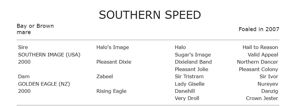In tax world, like fashion, often the timeless “everything old is new again” quote applies. Such is the case for the company ‘loss carry back’ rules.
These rules were first introduced in the 2012 Budget, however their benefits were, regrettably, short lived as they were repealed from the 2014 tax year.
Recognising that these rules could be a stimulant to Covid19 economic recovery, the Government reintroduced these rules in the 2020/21 Budget announced in October last year. I did report on this in my Budget release, but only to a limited extent as the final rules surrounding this concession had yet to be legislated.
What makes these rules so significant is that a tax loss made in an eligible tax year, which ordinarily would have to be carried forward and hopefully utilised in future profitable year(s) to reduce tax payable, can now be carried back to reduce the tax paid in an eligible prior tax year.
The legislation around these rules is now finalised and operative so it’s time I went through them in a more detailed manner. Given the cyclical nature of a commercial Breeding and Racing business, and the losses that often are incurred in the early years, these losses have immense relevance to industry players trading via companies.
These rules can be a little complex and I’ve tried to explain them below in as practical a way as possible. I hope many of you whose company incurred a tax loss in 2020 can use them to claw back all or sum of the tax paid in 2019 – I know new and existing clients of ours have and they are delighted with the results!
- Overview
As per fate of the rules introduced in 2012, these ‘loss carry back’ rules are a temporary measure that will allow companies with an aggregated turnover of less than $5 billion to ‘carry back’ tax losses from the 2020, 2021 and/or 2022 income years. Such losses can then be applied against profits made from the 2019 income year – that is, effectively in the form of a refund of tax paid on those earlier profits. Refer eligibility requirements below.
In practical terms, the carrying back of tax losses will be a notional exercise. That is, there will be no requirement to actually amend prior year tax returns to apply the losses being carried back. Rather, the refund of tax paid in prior years will be provided by way of a refundable tax offset that is claimed when companies lodge their tax return for the 2021 and/or 2022 income years.
- What losses can be “carried back”?
Only ‘tax losses’ (i.e., revenue losses) may be carried back under the new rules. That is, the new rules do not apply to capital losses. Furthermore, it should be noted that tax losses are only eligible to be carried back where the ‘loss year’ is any or all of the 2020, 2021 or 2022 income years.
Broadly, a taxpayer will have a tax loss for an income year (referred to as the ‘loss year’) if their allowable deductions for the year (excluding any prior year tax losses) exceed their assessable income and any net exempt income derived during the year. For instance, this ‘tax loss’ definition under these rules does not allow a tax loss that arises by converting excess franking credits to be carried back as it does not represent an economic loss.
- Which entities are eligible to carry back losses?
The tax loss carry back measure is only available to corporate tax entities, i.e. companies.
To be eligible to carry back tax losses, a corporate tax entity must satisfy both of the following requirements:
- The entity’s turnover for the loss year must be less than $5 billion – Broadly, this requirement will be met if the entity is a ‘small business entity’ in the loss year, or would be a small business entity (‘SBE’) if the threshold for being an SBE was $5 billion. In effect, this means that a company must
• carry on a ‘business’ in the loss year; and
• have an ‘aggregated annual turnover’ (i.e., including the annual turnover of affiliates and connected entities) of less than $5 billion either in the loss year (or the prior year).
- The entity must be a company during the relevant years
- What are the requirements for claiming a ‘loss carry back tax offset’?
Broadly, the new measure allows eligible companies to use losses made in the 2020, 2021 or 2022 to obtain a tax offset (the ‘loss carry back tax offset’) for tax paid in relation to the 2019, 2020 or 2021 income years, where certain conditions are met.
More specifically, an eligible company (with a turnover of less than $5 billion in the loss year) will be entitled to claim a loss carry back tax offset in its tax return for the 2021 income year and/or the 2022 income year (the ‘current year’), if all the following requirements are met:
(a) The entity is a company throughout the ‘current year’.
(b) The entity had a tax loss in any or all of the 2020, 2021 or 2022 income years (the ‘loss year’).
(c) The entity had an ‘income tax liability’ for any or all of the 2019, 2020 or 2021 income years.
(d) The entity has lodged its income tax return for the current year and each of the five income years immediately before the current year.
(e) The entity makes a choice to claim a loss carry back tax offset for the current year, in accordance with the requirements.
Broadly, the choice must specify:
• each loss year that the entity wishes to carry an amount back from;
• how much of the tax loss the entity wishes to carry back for each income year; and
• each income year the entity wishes to carry the loss back to (the ‘gain year’).
For example, if a tax offset is to be claimed in the 2021 income year (i.e., the current year) for a tax loss that was made in the 2020 income year and is to be carried back to the 2019 income year, the entity’s choice must specify how much of 2020 tax loss is to be carried back to 2019.
TAX TIP – Loss carry back is optional
Tax loss carry back is optional. That is, where eligible, an entity can choose to (notionally) carry back any tax losses from the 2020, 2021 or 2022 income years to generate a refundable tax offset in respect of an income tax liability (if any) that relates to the 2019, 2020 or 2021 income years.
Furthermore, an entity can choose how much of a tax loss is to be carried back.
Alternatively, the entity may choose to adopt the current system to carry forward tax losses and deduct them against income (if any) derived in a later income year.
- Limit on refundable tax offset
Broadly, the amount of the refundable tax offset that an eligible company can claim for an income year (i.e., the ‘current year’) is generally the lesser of the following amounts:
- The sum of the ‘loss carry back tax offset component’ for the relevant income years. This basically limits the tax offset to the entity’s income tax liability for each income year the loss is carried back to.
(b) The entity's franking account balance at the end of the current year.
EXAMPLE 1 – Tax loss carried back to 2019 year
Stay Inside Pty Ltd has a tax rate of 27.5% for the 2019 & 2020 tax years. For the 2020 tax year, Stay Inside has tax loss of $700,000 and a franking account balance at year-end of $180,000. The following is the entity’s tax history for the 2019 tax year:
2019 tax year – tax liability of $165,000 (NIL exempt income)
Stay Inside chooses to ‘carry back’ $600,000 of the $700,000 2020 tax loss to the 2019 tax year. The $100,000 not carried back is carried forward to the 2021 tax year.
What is the amount of the ‘loss carry back tax offset’ for the 2020 income year?
$165,000. This is the lesser of the sum of the ‘loss carry back tax offset components’ for 2019 (i.e., $600,000 x 27.5%) and the franking account balance for 2020 (i.e., $180,000).
Accordingly, Stay Inside receives a refund of $165,000 from lodging its 2020 tax return.
Please don’t hesitate to contact the writer if you wih for me to clarify or expand on any of the matters raised in this article.
Prepared by:
PAUL CARRAZZO CA
Carrazzo Consulting Pty Ltd
Chartered Accountants
801 Glenferrie Road, Hawthorn, VIC, 3122
TEL: (03) 9982 1000
FAX: (03) 9329 8355
MOB: 0417 549 347
E-mail: paul.carrazzo@carrazzo.com.au
Web: www.carrazzo.com.au










